1. India’s Declining Fertility Rate and Its Demographic Implications – Indian Society
Why in News?
- According to a recent United Nations Population Fund (UNFPA) report (2025), India’s population is projected to reach 146.39 crore by April 2025.
- This projection highlights significant changes in India’s demographic profile.
Key Takeaways
1. Declining Fertility Rate
- Current Fertility Rate: 1.9 children per woman (below replacement level of 2.1).
- In 1960, this rate was 6 children per woman — a steep decline due to:
- Better reproductive healthcare.
- Women’s empowerment and higher educational attainment.
- Increased urbanization and economic development.
2. Population Projections
- India remains the world’s most populous country.
- Population is expected to peak at 170 crore in coming decades.
- The current demographic scenario signals that India is at an advanced stage of demographic transition.
3. Factors Driving Fertility Decisions
Financial Constraints
- 38% of respondents cited economic challenges as the main reason for preferring fewer children.
- Reflects a global trend where cost of raising children impacts fertility decisions.
Changing Social Dynamics
- Family preferences and influence of healthcare professionals shape reproductive decisions.
- 19% of respondents said their partners preferred smaller families.
4. Demographic Dividend and Emerging Challenges
Demographic Dividend
- 68% of India’s population is in the working-age group (15-64 years).
- Presents a window of opportunity for economic growth.
- Potential for enhanced productivity, innovation, and economic dynamism.
Emerging Challenges
- As fertility declines, population ageing will increase:
- More elderly population.
- Greater demand for healthcare, pensions, and social security.
- Need for strategic policy shifts:
- Moving from population control to supporting reproductive rights and family support.
- Ensuring sustainable economic policies to address ageing concerns.
Policy Implications & Way Forward
- Upcoming 2027 Census provides an opportunity to redesign health and welfare policies.
- Shift focus towards:
- Strengthening reproductive healthcare.
- Supporting families economically.
- Promoting gender equality.
- Preparing for population ageing with appropriate healthcare and pension systems.
Exam Connect – Possible Questions
Prelims
1. As per the UNFPA 2025 report, India’s current fertility rate is:
A. 2.5
B. 2.1
C. 1.9
D.1.6
Answer: C. 1.9
2. What percentage of India’s population currently falls under the working-age group (15-64 years)?
A. 58%
B. 62%
C. 68%
D. 72%
Answer: C. 68%
Mains
1. “India’s declining fertility rate is a double-edged sword.” Discuss this statement in light of the recent demographic trends and policy implications.
2. Analyze the opportunities and challenges presented by India’s demographic dividend. What policy measures should India adopt to fully leverage this potential?
3. Discuss the significance of shifting population policy focus from population control to supporting reproductive rights and family well-being.
2. Towards Viksit Bharat: A Decade of Inclusive Growth, Infrastructure, and Empowerment – Economy
Why in News?
A recent report highlights India’s transformative progress over the past decade:
- Emphasizing inclusive growth, infrastructure development, digital empowerment, and governance reforms.
- The narrative of development has shifted beyond GDP to fostering dignity, opportunity, and hope for all citizens.
Key Takeaways
New Measures of Progress
- Progress now judged by:
- Dignity of citizens.
- Opportunities available to all.
- Social inclusion, not just GDP growth.
Impact of Welfare Schemes and Structural Reforms
- Millions uplifted via:
- Financial inclusion.
- Healthcare access.
- Housing.
- Digital connectivity.
- Livelihood creation.
A New Bharat in the Making: Case Studies
- Annam Lakshmi Bhavani (Andhra Pradesh): Started jute bag unit with a Mudra loan.
- Jagdev Singh (Haryana): Uses AI-based app for improved crop management.
- Meera Manjhi: Received LPG connection under Ujjwala Yojana, improving health and quality of life.
Foundational Philosophy: Antyodaya
- Antyodaya: Uplifting the last person in the queue.
- Four pillars guiding India’s transformation:
- Infrastructure that connects.
- Inclusive growth.
- Manufacturing that creates jobs.
- Simplified systems that empower citizens.
Infrastructure Boom: Physical, Digital, Social
Physical Infrastructure
- Capital investment: ₹1.2 lakh crore in 2025-26.
- Transport:
- 59,000 km highways built.
- 37,500 km railway tracks constructed in past 11 years.
Digital Public Infrastructure (DPI)
- Aadhaar, UPI, DigiLocker — global benchmarks.
- 141 crore Aadhaar registrations; 60 crore UPI transactions daily.
- IndiaAI Mission:
- 34,000 high-speed computer chips produced at 1/3rd global cost.
Social Infrastructure
- Healthcare & Education:
- Medical colleges: 387 → 780.
- AIIMS: 7 → 23.
- Welfare at Scale:
- 530 million Jan Dhan accounts.
- 40 million homes under PMAY.
- 120 million toilets under SBM.
- 140 million households connected with tap water under Har Ghar Jal.
- 350 million covered under Ayushman Bharat.
- 110 million farmers supported via PM-KISAN.
- 100 million families using LPG under Ujjwala Yojana.
Manufacturing & Industrial Growth
Make in India
- Launched in 2015 to boost job creation and industrial revival.
Electronics Manufacturing
- Increased 6x to ₹12 lakh crore+.
- Exports increased 8x.
Semiconductor Mission
- First commercial fab lab under construction.
- 5 OSAT (Outsourced Semiconductor Assembly and Test) units underway.
- Over 20 chipsets designed by Indian students/engineers.
- 270 universities onboarded for chip design training.
Governance Reforms & Simplification
- Silent revolution:
- 1,500 old laws repealed.
- 40,000+ compliances removed.
- New-age laws: Based on trust, simplicity, and dignity of citizens.
Security & Strategic Clarity
- Shift from reactive to proactive counter-terror operations.
- New doctrine of decisive retaliation and zero tolerance for nuclear blackmail.
Economic Trajectory
- 2004: India 11th largest economy.
- Until 2014: No significant rank change.
- Post-2014:
- India now 5th largest economy.
- Poised to become 3rd largest.
Conclusion
India’s journey towards Viksit Bharat (Developed India) is marked by:
- A shift from mere economic growth to inclusive, dignified development.
- A combination of infrastructure expansion, industrial growth, social welfare, and governance reforms.
- Vision: To build a future where every citizen has the opportunity to contribute to and benefit from India’s rise.
Exam Connect – Possible Questions
Prelims
1. Which of the following is NOT a component of India’s Digital Public Infrastructure (DPI)?
A. Aadhaar
B. UPI
C. DigiLocker
D. BharatNet-5G
Answer: D. BharatNet-5G
2. As per the latest data, how many medical colleges exist in India?
A. 387
B. 500
C. 780
D. 890
Answer: C. 780
Mains
1. Discuss the role of infrastructure development in promoting inclusive growth in India. Illustrate your answer with recent initiatives and outcomes.
2. “The transformation towards Viksit Bharat requires not just economic reforms but social empowerment and governance reforms.” Discuss this statement.
3. Analyze the progress made under the Make in India and Semiconductor Mission initiatives. What further steps are needed to make India a global manufacturing hub?
3. Kerala Seeks Wildlife Act Amendment to Cull Problematic Wild Animals – Environment
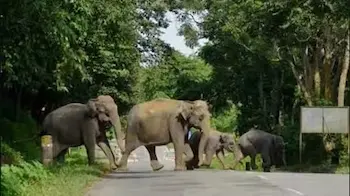
Why in News?
- Kerala has requested the Central Government to amend the Wildlife (Protection) Act, 1972.
- The aim is to permit controlled culling of wild animals that:
- Invade human settlements.
- Threaten human life and property.
Key Takeaways
Human-Wildlife Conflict in Kerala
- 273 conflict hotspots identified across the state.
- Major problematic species:
- Tigers.
- Leopards.
- Wild boars.
- Casualties (2016 to Jan 2025):
- 919 deaths.
- 8,967 injuries.
Drivers of Conflict
- Habitat degradation:
- Decline in forest quality pushes wildlife toward human areas.
- Caused by:
- Deforestation.
- Fragmentation of corridors.
- Climate change.
- Human encroachments.
- Human activities:
- Agricultural expansion.
- Urbanization near forests.
Legal and Practical Challenges
Wildlife Protection Act, 1972
- Schedule I animals (like tigers, leopards, elephants) enjoy the highest level of protection.
- Section 11 allows culling only after:
- Proving capture/relocation is not viable.
- Receiving permissions from relevant authorities — a time-consuming process.
Need for Controlled Culling
- Kerala proposes:
- Region-specific.
- Season-specific.
- Threat-level based controlled culling.
- Aim:
- Protect human life and agricultural productivity.
- Ensure balanced wildlife management.
Proposed Amendments
- Classification of Vermin:
- Section 62 allows the Centre to declare species as vermin for a specific duration.
- Kerala wants to classify wild boars as vermin to allow easier culling.
- Revisiting Protection Status:
- Proposes removal of bonnet macaque from Schedule I to enable faster interventions.
- Bonnet macaques and peafowls are not life-threatening but cause large-scale crop damage.
Broader Context: Human-Wildlife Conflict in India
- A growing challenge across states like:
- Karnataka.
- Maharashtra.
- Uttarakhand.
- Assam.
- Key causes:
- Shrinking natural habitats.
- Increased human density near forests.
- Climate-induced migration of wildlife.
- Balancing Act:
- Conservation vs. Human safety & livelihoods.
- Need for policies that ensure sustainable coexistence.
Conclusion
Kerala’s request underscores the urgent need to adapt wildlife laws to address:
- Escalating human-wildlife conflicts.
- Protection of human lives and crops.
- Sustainable conservation efforts.
A carefully designed scientific and ethical framework is essential to balance biodiversity protection with human well-being.
Exam Connect – Possible Questions
Prelims
1. Section 62 of the Wildlife (Protection) Act, 1972 empowers the Central Government to:
A. Declare a species as extinct
B. Reclassify a species into Schedule I
C. Declare a species as vermin
D. Notify new protected areas
Answer: C. Declare a species as vermin
2. Bonnet macaques are currently listed under which Schedule of the Wildlife (Protection) Act, 1972?
A. Schedule V
B. Schedule III
C. Schedule I
D. Schedule IV
Answer: C. Schedule I
Mains
1. Human-wildlife conflict is an emerging challenge to India’s conservation efforts. Examine the causes and suggest a balanced policy approach.
2. Should India amend its Wildlife Protection laws to allow controlled culling? Critically discuss in the context of Kerala’s recent request.
3. Discuss the role of habitat management and community participation in reducing human-wildlife conflicts in India.
4. Third United Nations Ocean Conference (UNOC3) – International Relations
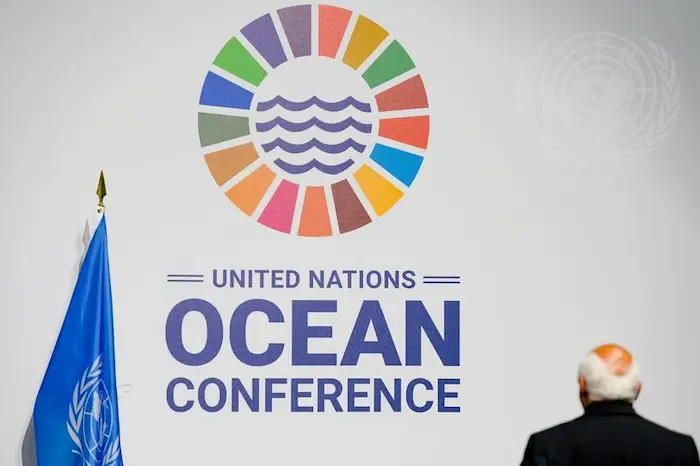
Why in News?
- The Third United Nations Ocean Conference (UNOC3) was held in Nice, co-hosted by France and Costa Rica.
- India emphasized the urgent need for international cooperation to protect the world’s oceans and ensure sustainable use of marine resources.
Key Takeaways
UNOC and SDG 14
- The UN Ocean Conference supports Sustainable Development Goal 14 (SDG 14): “Conserve and sustainably use the oceans, seas and marine resources for sustainable development.”
- Key issues discussed:
- Marine pollution (especially plastic waste).
- Overfishing.
- Climate change impacts on oceans.
- Habitat degradation.
Importance of Oceans
- Oceans cover 71% of Earth’s surface.
- They regulate climate, produce oxygen, support biodiversity, and sustain livelihoods.
- Unsustainable practices threaten:
- Marine ecosystems.
- Coastal economies.
- Global climate stability.
About United Nations Ocean Conference (UNOC)
- A multilateral forum bringing together:
- Governments.
- NGOs.
- Academia.
- Private sector.
- Aims to foster partnerships and voluntary commitments for ocean conservation.
Timeline of Conferences
| Year | Location | Co-hosts |
|---|---|---|
| 2017 | New York | Fiji & Sweden |
| 2022 | Lisbon | Portugal & Kenya |
| 2025 | Nice | France & Costa Rica |
| 2028* | TBA | Chile & South Korea (proposed) |
* Fourth conference yet to be officially announced.
Impact So Far
- Since 2014:
- $130 billion mobilized for ocean conservation.
- 2,160 voluntary commitments for marine protection.
Major Indian Initiatives Showcased at UNOC3 (2025)
1. Deep Ocean Mission
- Flagship project to explore the deep ocean.
- Progress on Samudrayaan Mission:
- Crew capsule designed to reach 6,000 meters depth.
- Supports deep-sea research and mineral exploration.
2. Plastic Pollution Action
- Ban on single-use plastics.
- Swachh Sagar, Surakshit Sagar campaign:
- Over 1,000 km of coastline cleaned.
- Large public participation.
3. Blue Economy Development
- Promoted through Sagarmala Programme:
- $80 billion investment in port-led infrastructure.
- Enhances maritime trade and coastal employment.
4. Marine Biodiversity Conservation
- Marine Protected Areas (MPAs):
- Now cover 6.6% of India’s Exclusive Economic Zone (EEZ).
- Supports conservation of critical marine species and habitats.
5. Marine Data Transparency
- Launched SAHAV Portal:
- Platform for digital governance of ocean resources.
- Facilitates data sharing and informed marine policy.
Legal Framework: UNCLOS
- Discussions at UNOC operate under the United Nations Convention on the Law of the Sea (UNCLOS).
- Key functions:
- Defines maritime zones: Territorial Sea, EEZ, Continental Shelf, High Seas.
- Regulates:
- Maritime activities.
- Environmental protection.
- Resource rights.
- Ensures coastal states can:
- Establish legal territorial limits.
- Protect maritime resources.
Conclusion
India’s proactive participation at UNOC3 demonstrates its commitment to:
- Protecting marine ecosystems.
- Developing a sustainable Blue Economy.
- Enhancing international cooperation for ocean governance.
The conference highlights the need for global action to address:
- Plastic pollution.
- Overfishing.
- Climate impacts on oceans.
- Marine habitat loss.
A healthy ocean is crucial for both ecological balance and economic prosperity.
Exam Connect – Possible Questions
Prelims
1. Sustainable Development Goal 14 pertains to:
A, Life on Land
B. Life below Water
C. Climate Action
D. Clean Water and Sanitation
Answer: B. Life below Water
2. The United Nations Convention on the Law of the Sea (UNCLOS) primarily deals with:
A. Air pollution control
B. International trade tariffs
C. Governance of maritime zones
D. Protection of inland forests
Answer: C. Governance of maritime zones
Mains
1. Discuss India’s approach to balancing marine conservation with the promotion of a Blue Economy. What challenges does it face in this pursuit?
2. Analyze the significance of international forums like the UN Ocean Conference in addressing transboundary environmental issues.
3. Explain the role of UNCLOS in ensuring sustainable use of ocean resources. How effective has it been in the context of rising ocean-related challenges?
5. Key Facts about Nickel – Science & Technology
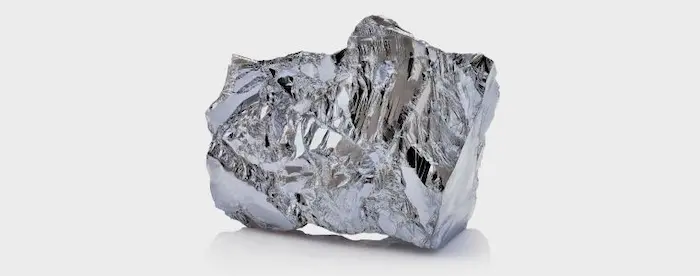
Why in News?
- A recent study has introduced a more sustainable method for nickel extraction:
- Uses hydrogen plasma instead of traditional carbon-based methods.
- Aims to reduce carbon emissions from nickel processing.
Key Takeaways
Physical Characteristics of Nickel
- Metallic element with a silvery-white, shiny appearance.
- 5th most abundant element in Earth’s crust and core.
- Also found in meteorites, soil, and water.
Biological Role
- Essential micronutrient for plants.
- Plays a role in enzyme activity and metabolic processes.
Sources and Global Distribution
Forms in Nature
- Occurs primarily as:
- Oxides.
- Sulphides.
- Silicates.
Nickel in India
- India’s significant reserves of nickel laterite:
- Primarily in the Sukinda region of Odisha.
Global Reserves (% of global reserves):
| Country | % of Reserves |
|---|---|
| Indonesia | 22% |
| Australia | 21% |
| Brazil | 17% |
| Russia | 7% |
| Cuba | 6% |
| Philippines | 5% |
Industrial Applications of Nickel
1. Alloying
- Major use in making stainless steel and heat-resistant steels.
- Alloyed with chromium and other metals to improve:
- Corrosion resistance.
- Tensile strength.
- Thermal stability.
2. Clean Energy Technologies
- Vital component in Electric Vehicles (EVs).
- Used in battery technologies:
- Nickel-Cadmium batteries.
- Nickel-Metal Hydride (NiMH) batteries (used in hybrid vehicles).
- Nickel-rich Lithium-ion batteries (for high-energy EVs).
3. Other Uses
- Aerospace industry.
- Electronics.
- Electroplating.
- Catalysts in chemical industries.
Environmental Significance
Sustainable Extraction
- Traditional nickel extraction via carbon-based methods releases significant CO₂ emissions.
- Hydrogen plasma-based extraction:
- Reduces carbon footprint.
- Aligns with sustainable mining practices.
- Supports global climate goals and green industrialization.
Conclusion
- Nickel is a critical metal for both industrial strength and green technologies.
- Sustainable innovations in nickel extraction are vital for:
- Reducing environmental impacts.
- Meeting the growing demand for EVs and clean energy solutions.
- India, with its reserves and demand for battery manufacturing, should invest in:
- Green mining technologies.
- Value-added processing of nickel.
Exam Connect – Possible Questions
Prelims
1. The Sukinda region of India is known for reserves of which of the following minerals?
A. Copper
B. Nickel
C. Lithium
D. Zinc
Answer: B. Nickel
2. Hydrogen plasma-based nickel extraction helps in:
A. Improving nickel purity only
B. Increasing production speed only
C. Reducing carbon emissions during extraction
D. Lowering mining costs only
Answer: C. Reducing carbon emissions during extraction
Mains
1. Nickel is considered a critical mineral for India’s transition to clean energy. Discuss its applications and the need for sustainable extraction practices.
2. Explain the role of hydrogen-based extraction technologies in making India’s mining sector more sustainable.
3. Discuss the strategic significance of nickel reserves for India in the context of its evolving Electric Vehicle (EV) ecosystem.
6. KATRIN Experiment Sets Strongest Limit on Neutrino Mass – Science & Technology
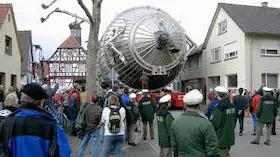
Why in News?
- The Karlsruhe Tritium Neutrino Experiment (KATRIN) in Germany has reported a major breakthrough:
- Achieved the strongest limit yet on the absolute mass of neutrinos.
- Neutrinos are fundamental subatomic particles whose tiny mass plays a vital role in understanding the universe and particle physics.
Key Takeaways
What are Neutrinos?
- Definition: Electrically neutral, subatomic particles with very small mass and no electric charge.
- Types: Three types (or “flavors”):
- Electron neutrino.
- Muon neutrino.
- Tau neutrino.
How Neutrinos are Produced
- In nuclear reactions, such as:
- The Sun (solar fusion).
- Nuclear reactors.
- Supernovae.
- Cosmic ray interactions in the atmosphere.
Properties & Significance
- Weakly interacting: Rarely interact with matter; trillions pass through us every second unnoticed.
- Oscillation: Neutrinos change flavor (electron ↔ muon ↔ tau), proving they must have non-zero mass.
- Scientific Implications:
- Challenge the Standard Model of particle physics (which originally assumed massless neutrinos).
- May hint at new particles or unknown forces beyond the Standard Model.
- Play a key role in understanding cosmic evolution and the matter-antimatter imbalance in the universe.
About the KATRIN Experiment
Objective
- Precisely measure the absolute mass of electron antineutrinos.
- A global quest — no previous experiment had pinned this value down definitively.
Location & Operation
- Karlsruhe Institute of Technology (KIT), Germany.
- Inaugurated in 2018; data collection began in 2019.
- Latest result is based on 259 days of measurement.
Scientific Principle
- Relies on tritium beta decay:
- Tritium → Helium + Electron + Electron antineutrino.
- Measures the energy spectrum of emitted electrons.
- Electrons near the endpoint energy (highest energies) are most affected by neutrino mass.
Measurement Method
- Retarding electric field filters out lower-energy electrons.
- Focuses on analyzing millions of decay events.
- Results provide an upper limit on neutrino mass (progressively narrowing this limit).
How KATRIN Advances Physics
- The most precise laboratory measurement of neutrino mass to date.
- Helps constrain cosmological models (neutrino mass influences cosmic structure formation).
- Offers complementary insights to astrophysical neutrino studies (like IceCube).
India’s Achievements in Neutrino Science
Historical Contribution
- India was one of the first to detect atmospheric neutrinos:
- 1965, at the Kolar Gold Fields (KGF) underground detector in Karnataka.
India-Based Neutrino Observatory (INO)
- A cutting-edge neutrino research facility under construction in Tamil Nadu.
- Will be one of the world’s largest underground laboratories.
Flagship Detector
- Iron Calorimeter (ICAL):
- 50,000-tonne magnetized detector.
- Will study atmospheric neutrinos and neutrino oscillations.
Broader Impact
- Advances detector technologies.
- Contributes to high-energy physics training in India.
- Potential applications:
- Medical imaging.
- Radiation detection.
- Electronics.
Global Role
- Complements international neutrino efforts:
- IceCube in Antarctica.
- Super-Kamiokande in Japan.
- DUNE in the USA.
- Positions India as a key player in global neutrino research.
Conclusion
- The KATRIN experiment represents a significant step toward solving one of the deepest mysteries in physics: What is the true mass of neutrinos?
- India, with its pioneering work at KGF and the upcoming INO, is poised to make vital contributions to this global scientific quest.
- Understanding neutrinos may ultimately unlock profound insights into:
- The early universe.
- The nature of matter.
- Physics beyond the Standard Model.
Exam Connect – Possible Questions
Prelims
1. Neutrinos are primarily generated by:
A. Nuclear fusion in stars
B. Geothermal activity
C. Gravitational waves
D. Tectonic plate movement
Answer: A. Nuclear fusion in stars
2. The KATRIN experiment is designed to study which property of neutrinos?
A. Charge
B. Spin
C. Mass
D. Lifetime
Answer: C. Mass
3. India first detected atmospheric neutrinos at which of the following sites?
A. INO, Tamil Nadu
B. Saha Institute of Nuclear Physics, Kolkata
C. Kolar Gold Fields, Karnataka
D. TIFR, Mumbai
Answer: C. Kolar Gold Fields, Karnataka
Mains
1. Neutrinos have challenged our understanding of the universe and the Standard Model of physics. Discuss their properties and scientific significance.
2. Explain the working of the KATRIN experiment and its contribution to particle physics. How does this complement India’s neutrino research efforts?
3. Discuss the potential applications of neutrino research in fields beyond particle physics. Highlight India’s role in advancing this frontier.
7. Blue Nationally Determined Contributions (NDC) Challenge – International Relations
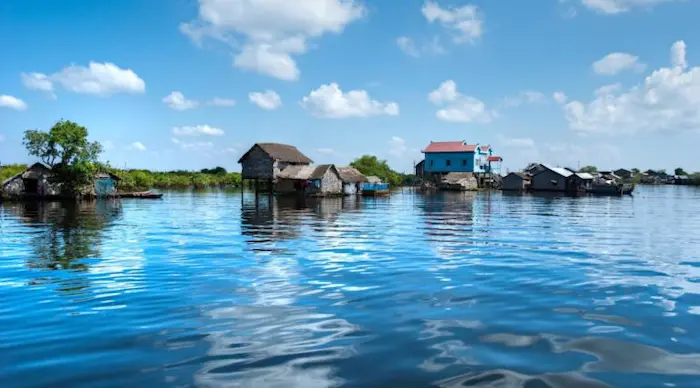
Why in News?
- The Blue NDC Challenge initiative was launched during the first day of the Third UN Ocean Conference (UNOC3).
- Aims to enhance global climate action by promoting the integration of ocean-related strategies into Nationally Determined Contributions (NDCs).
Key Takeaways
About the Initiative
- Spearheaded by France and Brazil.
- Urges countries to embed ocean-related climate strategies into their NDCs by COP30 (to be held in Belem, Brazil).
- Currently supported by seven countries:
- Australia.
- Fiji.
- Kenya.
- Mexico.
- Palau.
- Republic of Seychelles.
Importance of Oceans in Climate Action
- Oceans:
- Absorb ~25% of CO₂ emissions.
- Store ~90% of excess heat from global warming.
- Provide ecosystem services critical to food security, livelihoods, and climate resilience.
- However, oceans remain underrepresented in current NDCs.
About Nationally Determined Contributions (NDCs)
- Definition: National climate action plans under the Paris Agreement (2015).
- Purpose:
- Outline emission reduction targets.
- Plan for adaptation to climate impacts.
- Promote sustainable development.
- Global goal:
- Limit global temperature rise to well below 2°C above pre-industrial levels.
- Strive to limit it to 1.5°C.
- NDCs are country-driven and updated every 5 years.
Role of the Blue NDC Challenge
Why Focus on Oceans?
- Oceans are:
- Carbon sinks.
- Drivers of climate regulation.
- Threatened by:
- Acidification.
- Deoxygenation.
- Warming.
- Marine biodiversity loss.
- Including blue strategies in NDCs ensures:
- Greater emphasis on ocean conservation.
- Integration of Blue Carbon ecosystems (mangroves, salt marshes, seagrasses) in climate planning.
Support and Endorsements
- Supported by:
- Ocean Conservancy.
- Ocean and Climate Platform.
- World Resources Institute (WRI) through Ocean Resilience and Climate Alliance (ORCA).
- WWF-Brazil.
Significance
For Global Climate Action
- Enhances ecosystem-based solutions.
- Promotes nature-based solutions for mitigation and adaptation.
- Builds climate resilience of coastal communities.
For India
- India’s long coastline and marine biodiversity make it a potential stakeholder.
- Initiatives like Blue Economy policy and Coastal Regulation Zone (CRZ) can be aligned with Blue NDC strategies.
Conclusion
- The Blue NDC Challenge is a timely initiative to:
- Recognize the central role of oceans in the climate system.
- Encourage nations to adopt ocean-centric climate policies.
- Foster global cooperation for sustainable ocean management.
Moving forward, countries like India must actively integrate marine ecosystems into their climate action frameworks.
Exam Connect – Possible Questions
Prelims
1. The Blue NDC Challenge initiative was launched during which international conference?
A. COP29
B. UN Ocean Conference (UNOC3)
C. UN Biodiversity Conference (COP15)
D. Stockholm+50
Answer: B. UN Ocean Conference (UNOC3)
2. The primary objective of the Blue NDC Challenge is to:
A. Increase ocean-related research funding.
B. Promote marine-based tourism.
C. Integrate ocean-related strategies into NDCs.
D. Create new marine protected areas.
Answer: C. Integrate ocean-related strategies into NDCs
Mains
1. Discuss the role of oceans in climate regulation and the significance of incorporating ocean-related strategies into Nationally Determined Contributions (NDCs).
2. Explain the objectives and potential impact of the Blue NDC Challenge initiative. How can India contribute to this effort?
3. “Oceans are both a victim of climate change and a solution provider.” Elucidate this statement with reference to recent global initiatives.

